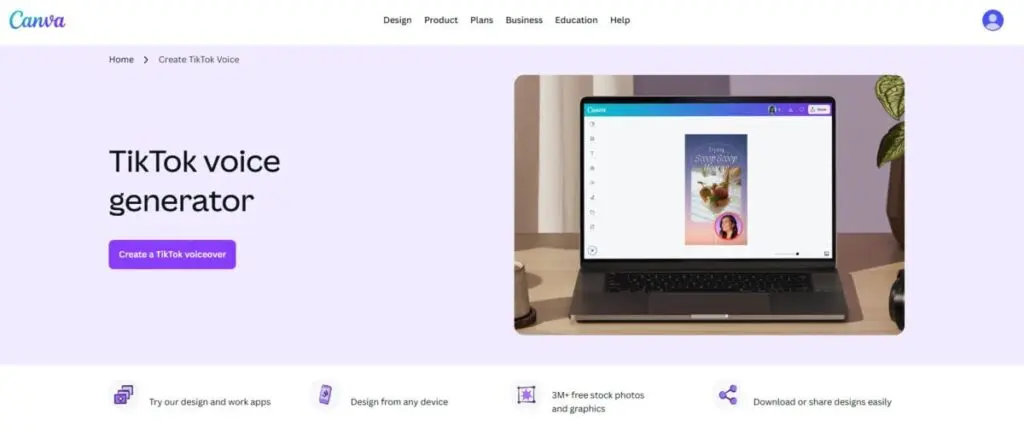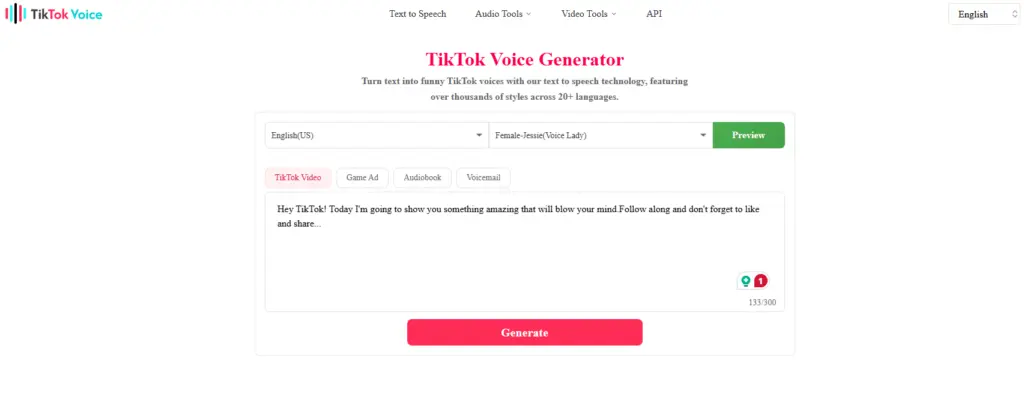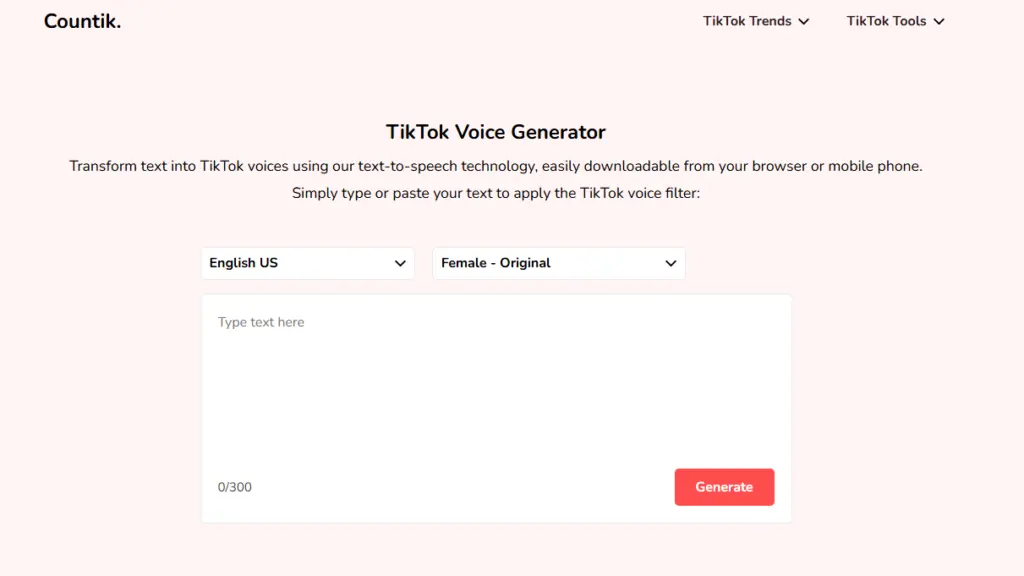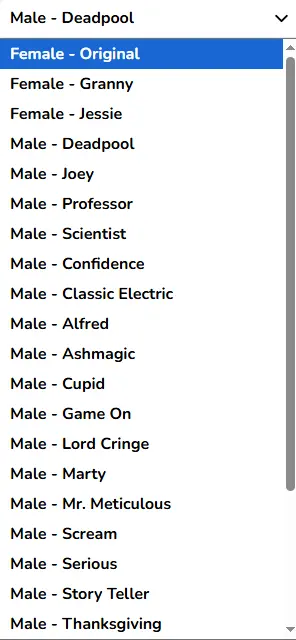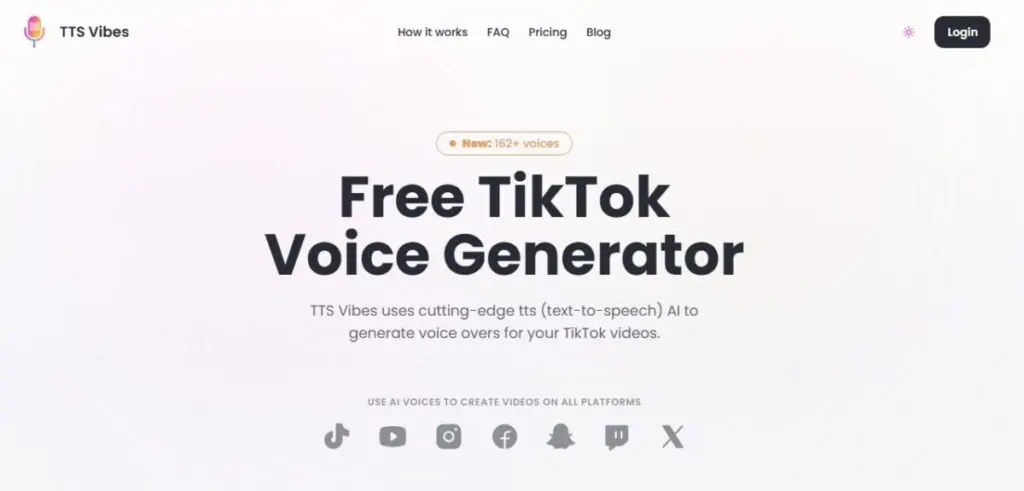Short-form teams are shipping more videos with fewer people, and voiceovers are the new bottleneck. Two questions now frame every sprint:
- Do you need an all-in-one editor that gets a decent readout fast, or an API you can script for repeatable, spec-locked outputs?
- How do you balance trend-friendly voices with brand safety, consent, and TikTok’s AI-labeling rules?
Lightweight, free browser tools that prioritize speed and character styles; platform editors that keep script-to-export in one timeline; and API-first systems offering verified voice cloning, consistent export specs, and room to scale across languages.
Multilingual dubbing and batch variant testing are rising, while governance (cloning consent, disclosure, storage) is finally catching up to creative ambition. Teams also care more about practicalities—render latency, per-character quotas, and whether MP3/WAV settings match the rest of the stack.
This article looks at the best TikTok AI Voice Generators to help you create short-form content at scale.
1. Canva
Canva’s built-in TikTok voice generator turns scripts into natural-sounding voiceovers directly inside its video editor, so creators and social teams can stay in one tool from script to publish.
It offers 200+ AI voices across multiple languages with controls for emotion, speed, and pitch—useful for UGC reads, trend explainers, and quick dubbing into non-English markets. For workflow fit, you can compose, animate, and resize vertical videos (e.g., Magic Animate/Switch) and layer the AI read over music without leaving Canva.
Licensing-wise, Canva’s AI Product Terms say you own your input and output.
What Makes Canva Stand Out
Operationally, the value is consolidation: type a script, preview, select from 200+ voices, and tweak emotion/speed/pitch—all within the same timeline where you trim clips and mix audio.
Here's a video to help you better understand the process:
@drtylertarver How to generate speech from text in Canva! 🙌 #canva @Canva
That reduces round-trips to separate TTS apps and speeds batch output for shorts. Voice cloning isn’t a native feature; if you need broader voice catalogs or different timbres, Canva’s Murf AI app adds additional voices and pitch/speed tuning from inside Canva’s editor.
Creative controls include timeline edits (trim, volume, fades) and music layering; Canva documents audio extraction and volume adjustments for fine-tuning the mix. On scale/performance, Canva markets “seconds”-level renders but doesn’t publish concrete latency or TTS credit quotas; plan for typical cloud queue variability.
Integrations are pragmatic rather than deep: export MP4 and hand off to CapCut or Premiere; team storage/permissions are handled by Canva (Free 5 GB; Pro/Teams up to 1 TB).
Output specifics: Canva clearly supports video export; official, end-user documentation for audio-only (e.g., MP3/WAV) export is limited—expect to export the video or use in-editor extraction if you need a separate track.
Why Canva Is an Ideal Fit?
Best for solo creators and brand/agency pods that want an all-in-one short-form workflow (script → voiceover → edit → export) without managing separate TTS tools. It’s also a solid pick for multilingual dubbing when “good-enough” synthetic reads and quick turnarounds matter more than SSML fine-control or custom-cloned voices. If you’re an API-first team needing programmatic TTS, SSML, pronunciation lexicons, or verified consented cloning, look elsewhere.
2. TikTok Voice
TikTok Voice (tiktokvoice.net) is a web TTS studio built for short-form workflows: type a script, pick a voice, generate, then play or download the audio for your edit. The tool consolidates voiceover and handy prep utilities (Audio Extractor, Vocal Remover, Vocal Isolator) in one place, so you can pull stems, clean tracks, and finish narration without hopping between tools.
It covers thousands of voices across 20+ languages and offers plan-based usage with character quotas; the Pro tier adds API access and three voice clones.
What Makes TikTok Voice Stand Out
The draw is speed and consolidation for creator pods: a simple generate → preview → download loop plus built-in utilities (isolate vocals, remove vocals, extract audio) that shave minutes from typical vertical-video edits. The library supports multilingual caption-over-b-roll, product explainers, and trend narration without leaving the browser; plan caps are transparent, so teams can forecast throughput by characters per month.
Voice cloning is included in Pro, as mentioned, and follows a defined process—upgrade, send a sample, and the clone is added to your account—useful when you want a consistent brand read across series.
Why TikTok Voice Is an Ideal Fit?
Choose TikTok Voice if you need fast, lightweight voiceovers plus practical audio utilities in a single browser tab. It suits solo creators and small agency teams shipping daily TikToks, and it’s a pragmatic pick for multilingual narration where turnaround time matters more than granular SSML control or enterprise governance.
With Pro, you can standardize delivery via API and keep a consistent cloned brand voice for recurring formats.
3. Countik
Countik’s TikTok Voice Generator is a free, browser-based TTS studio for short-form video. Type or paste a script, pick a TikTok-style voice, generate, then play or download the audio on desktop or mobile—no installs, no account required.
It covers nine languages (English, French, German, Japanese, Indonesian, Korean, Spanish, Portuguese, Vietnamese) and 90 voice styles, including character and singing options that match common TikTok trends.
The workflow fits the creator tooling you already use: export an MP3 and drop it into CapCut (or another editor) following Countik’s step-by-step guide. When you publish, label realistic AI audio to align with TikTok’s synthetic-media policy and avoid confusion for viewers.
What Makes Countik Stand Out
Countik is built for speed and simplicity. The interface exposes what a short workflow needs most: language/voice selection, a text field, generate, then preview/download—fast enough to iterate lines until the read lands.
The catalog is broad for a free tool: beyond standard male/female reads, you’ll find popular character voices (e.g., Scream, Story Teller, Scientist, Stitch, Rocket, Deadpool) and seasonal singing presets that map cleanly to trend formats and comedic narration. Practicalities are covered: audio downloads in MP3 work on every editor, and Countik’s own guidance walks through aligning the TTS track to video beats in CapCut so you can trim, time, and export for TikTok without extra plugins.
The generator runs on desktop and mobile, so you can fix a line on the go; input length is capped (300 characters per generation), which suits hooks, captions-over-b-roll, and short explainer beats. Countik also sits inside a broader toolkit (analytics viewer, downloader, hashtag/caption generators), so you can keep light tasks in one ecosystem while you ship daily shorts.
Why Countik Is an Ideal Fit?
Choose Countik when you need fast, no-cost TikTok-style voiceovers with trend-ready character options and a dead-simple export path. It’s ideal for solo creators and lean agency pods producing frequent UGC, listicles, memes, or quick dubs—especially when speed matters more than studio-grade prosody control or custom voice cloning.
4. ElevenLabs
ElevenLabs’ TikTok Voice Library gives you a ready-to-use set of creator-style voices and an in-page demo that runs on the company’s Multilingual v2 model.
For teams standardizing short-form narration, the platform also exposes a production API with streaming synthesis and explicit control over output formats via the output_format parameter, so you can keep exports consistent across pods. Cloning is offered with verification and is limited to three voices. You can go up to 660 voices with the highest tier, the Business tier.
@elevenlabs 🎙 Use AI-generated voices to instantly elevate your content. Try ElevenLabs for free today.
What Makes ElevenLabs Stand Out
Operationally, you can move from ideation to a scroll-stopping read in minutes: select a TikTok-optimized voice from the library page, set language/model (Multilingual v2) and speed, audition lines, and export—an efficient loop for hooks, storytimes, skits, and product callouts.
For scale, the Text-to-Speech API supports real-time streaming, letting editors or internal tools request audio on the fly, and it standardizes deliverables through the output spec (codec × sample rate × bitrate) to match downstream pipelines.
Compliance on platform is straightforward: TikTok’s policy expects visible labeling for realistic AI audio/video, so add labeling to your upload checklist alongside captions and cover selection.
Why ElevenLabs Is an Ideal Fit?
Choose ElevenLabs when you want creator-calibrated voices plus an API that your team can script against—ideal for agency pods batching dozens of variants (hooks, CTAs, locales) and for brands that need repeatable exports across languages. It’s also a strong fit when you need cloning with verification for a consistent brand voice across series and ad sets.
5. TTS Vibes
TTS Vibes is a free, browser-based TikTok voice generator built for quick, creator-style narration. You type (or paste) up to 300 characters, pick a voice, hit Generate, then Play or Download—no installs, desktop or mobile.
The library currently lists 162+ voice styles across 33 languages, spanning everything from standard male/female reads to trend-ready characters and singing presets. It’s positioned for short-form workflows across TikTok, YouTube, Instagram, and more, so you can export audio and finish timing/mixing in your editor of choice.
What Makes TTS Vibes Stand Out
This tool prioritizes speed and simplicity. The interface exposes only what shorts teams need: language/voice selection, a text field, and a generate-preview-download loop—fast enough to iterate hooks and alt reads. Catalog depth is unusually broad for a free workflow: beyond core voices, you’ll find character sets (e.g., Pirate, Scientist, Opera, Deadpool, Ghostface) and seasonal styles (Santa, Halloween/Thanksgiving singing) for on-trend formats.
Voice categories and filters make auditioning efficient (e.g., “conversational,” “narration,” “storytelling,” “ASMR,” “news”). Pricing is straightforward: Free = unlimited generations of non-premium voices with a 300-character cap per generation; Basic $6.99/mo removes non-premium character limits and adds 1K words of Premium voices; Creator $34.99/mo bumps Premium credits to 5K words and unlocks the highest-quality audio.
Why TTS Vibes Is an Ideal Fit?
Pick TTS Vibes when you need a fast, no-cost TTS pass with broad, trend-friendly voice variety—perfect for solo creators and lean agency pods shipping daily UGC, memes, listicles, or quick dubs. It’s also a pragmatic choice for multilingual captions-over-b-roll when turnaround time matters more than studio-grade SSML or programmatic pipelines.
Choose the Right TikTok VO Stack—Fast
If you’re building short-form at scale, the right text-to-speech tool depends on how you produce: all-in-one editing, rapid fire creator pods, or API-driven pipelines. Match tools to the work: creator pods and daily shorts benefit from speed and simple downloads; brand safety or regulated categories benefit from clear consent and governance; multilingual dubbing benefits from stable voice sets and consistent export settings.
Whatever you choose, add AI-content labeling to your upload checklist and document internal guardrails for character/celebrity styles.
Biggest strength of each tool:
- Canva: Seamless, all-in-one workflow—script, VO, edit, and export in one place.
- TikTok Voice: Speed + bundled utilities (vocal isolate/extract) for rapid creator workflows.
- Countik: Free, simple MP3 exports with 90 trend-ready styles across nine languages.
- TTS Vibes: Wide, fast library (162+ styles/33 languages) with a friction-light free tier.
- ElevenLabs: Production-grade API and verified cloning with consistent, spec-locked exports.
Choose the stack that fits your cadence, compliance bar, and distribution plan—and ship with confidence.
Frequently Asked Questions
How can we localize TikTok videos without re-recording voiceovers?
Use AI dubbing to translate narration while keeping timing intact; Meta’s AI Dubbing tool outlines how automated multi-language tracks slot into short-form workflows.
Do virtual creators make sense alongside human voiceovers?
They can scale production and test formats; see how virtual TikTok influencers impact reach, brand fit, and audience expectations.
What’s the quickest way to verify if AI voiceovers lift performance?
Pair tests with free TikTok analytics to compare views, completion, and engagement by voice variant.
How can we draft scripts faster without sounding generic?
Start with AI content generators for hooks and alternates, then refine for pacing and brand lexicon.
Do fonts matter when mixing captions with AI narration?
Yes—legible typography aids retention; use this TikTok fonts guide to pick styles that read cleanly on mobile.
Which editors pair well with TTS for mobile-first teams?
Consider leading TikTok video editing apps to streamline timing, ducking, and export without leaving your phone.
If we build a synthetic brand spokesperson, where do we start?
Define persona and guardrails using a primer on how to create an AI influencer before scaling voice consistency.
How do filters affect perceived authenticity of narrated clips?
Match tone and genre by selecting popular TikTok filters that support the voiceover’s mood rather than distract from it.


